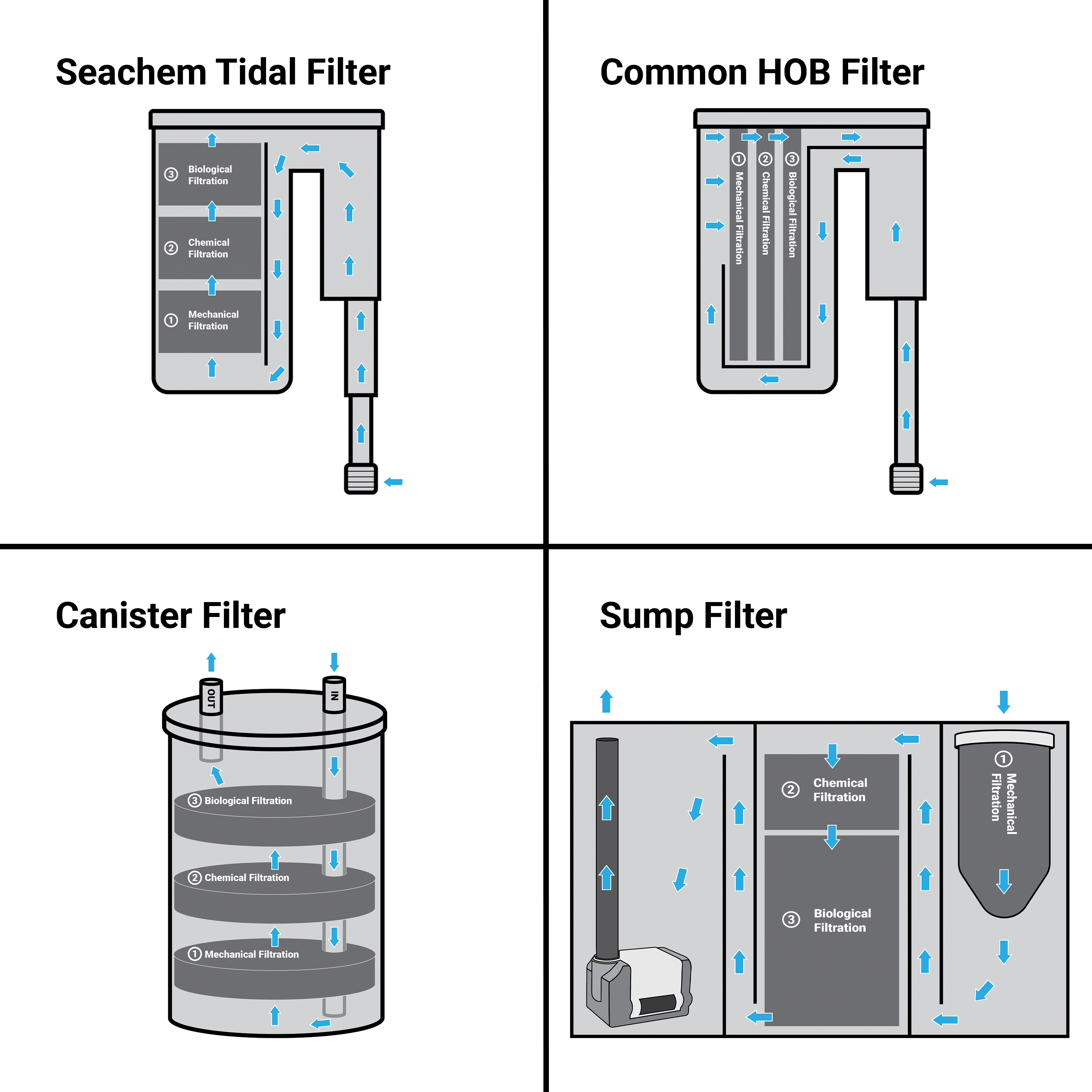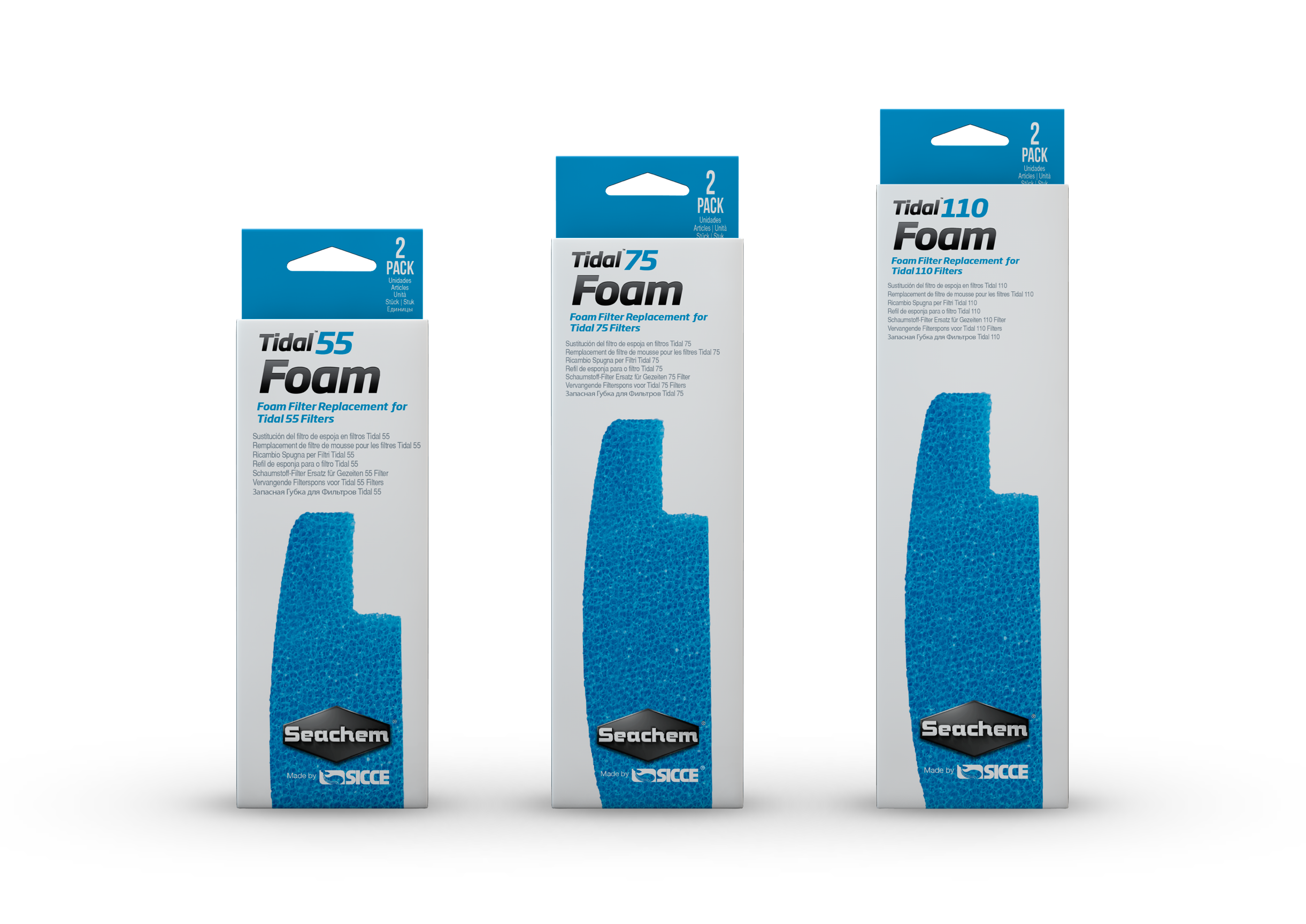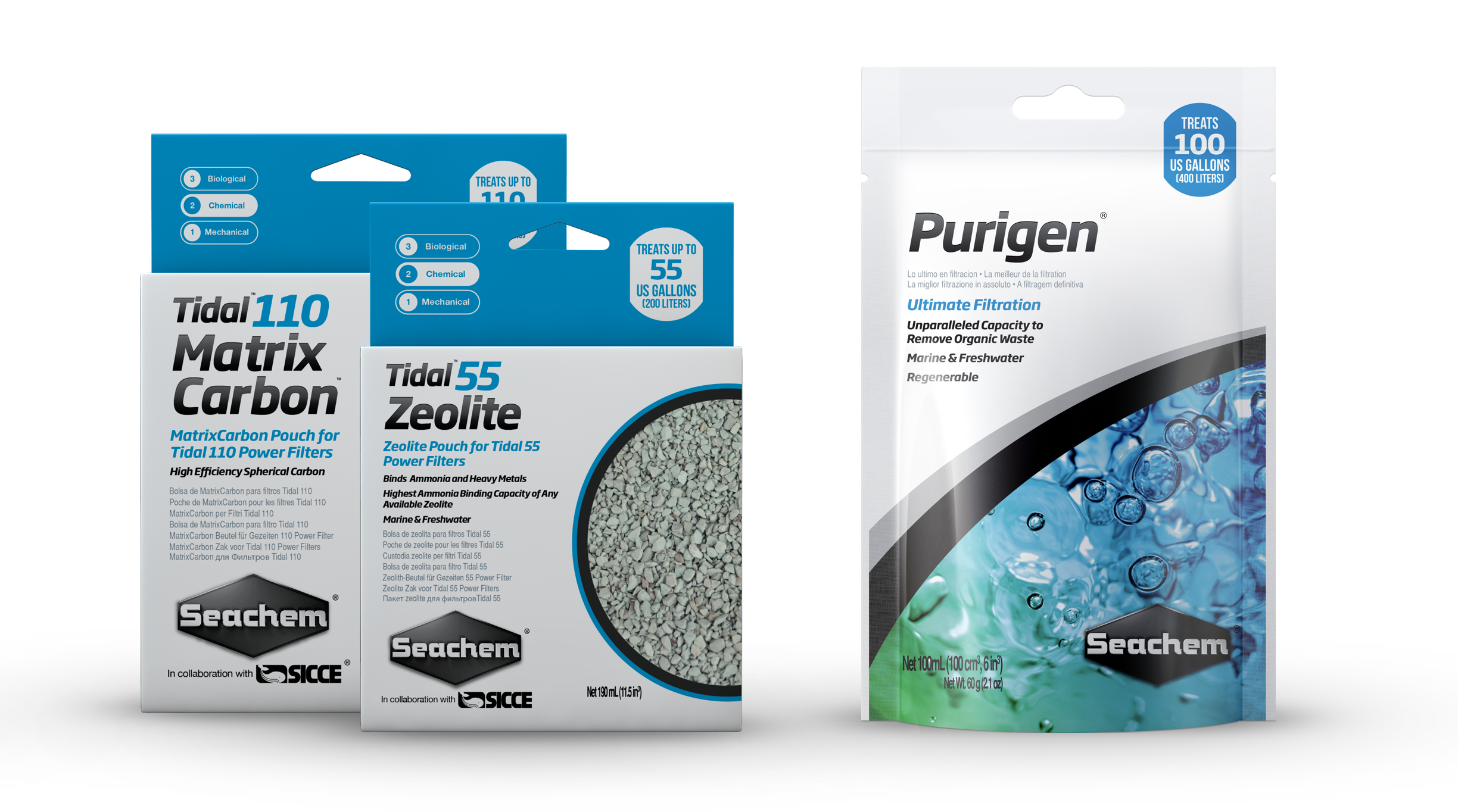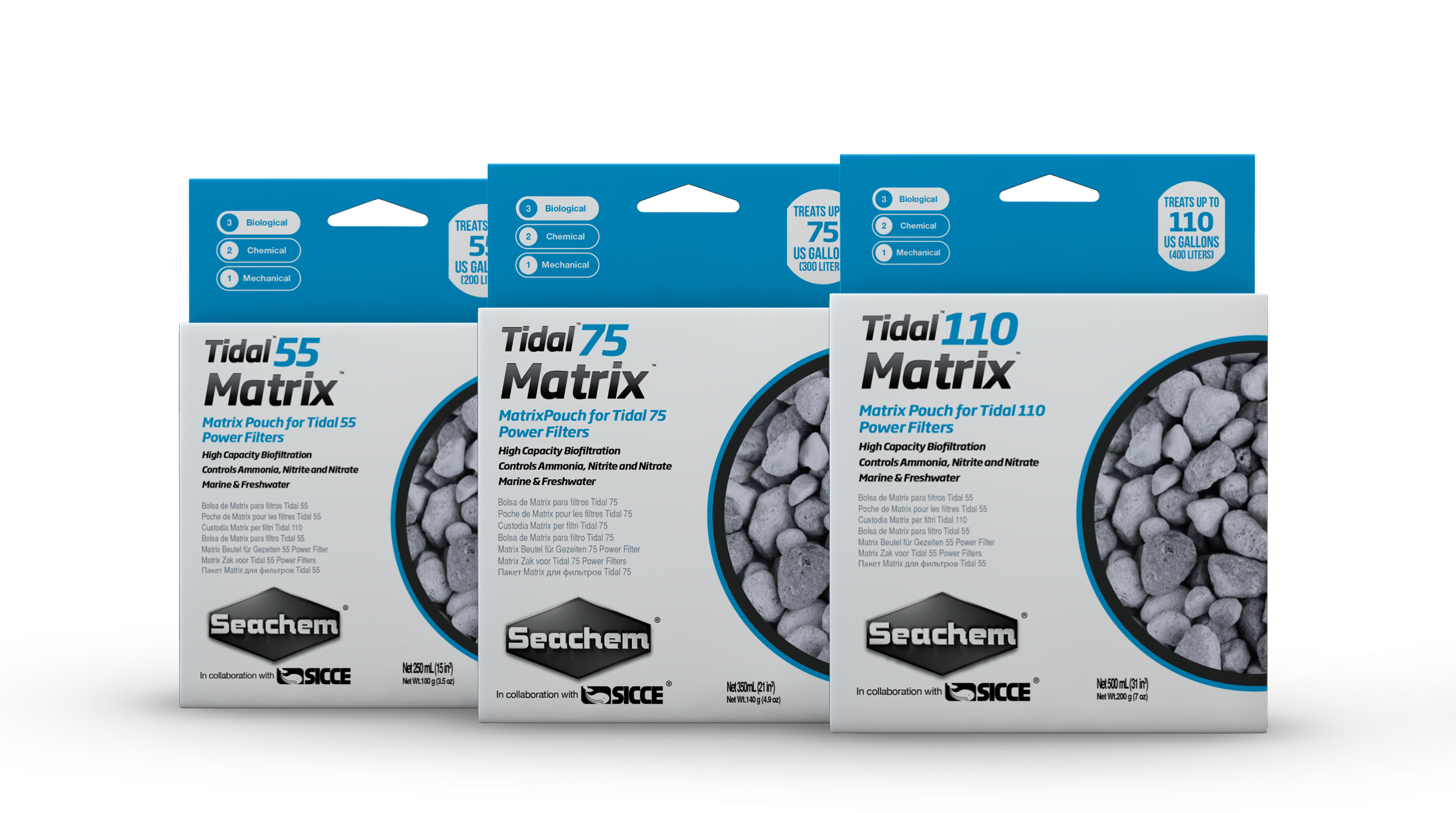Most medias will still work regardless of where they are placed in the filter as long as there is still water flowing over and through them, but Seachem® has a few recommendations as to the specific order in which water should flow through filter media to ensure that all types of media are working at maximum efficiency. Every filter is different, so investigate your filter to know the direction of water flow. Here are some common filter setups:

1. Mechanical Filter media.
This includes Seachem Tidal Filter Foam™, sponges, filter floss, and anything else intended to physically strain particles out of the water. Your water should pass through this first to make sure that particles from your water do not block up and prevent proper water flow through your later filter medias.

2. Chemical Filter Medias
This includes Purigen®, MatrixCarbon™, Zeolite™, PhosGuard™, and any filter media intended to directly target a certain type of chemical for removal from the water. These medias work best if they get the "first shot" at materials like phosphate or organic waste before the beneficial bacteria in your bio-media has a chance to break these chemicals down into a form that the chemical media cannot absorb. For example, Purigen® can absorb organic molecules before they are turned into nitrate, but cannot absorb nitrate itself.

3. Biological Filter Medias
This type of media exists to house beneficial bacteria colonies, and will work at maximum efficiency if kept clear of detritus by mechanical filter media and provided with water that has been cleared of extraneous compounds by chemical filter media. It should be placed so that water flows through it last for this reason.

A Note About Convenience
The method described above results in maximum efficiency for each type of filter media, but depending on the type of filter setup, can be inconvenient when certain types of media need to be replaced or rinsed frequently. It is perfectly fine to alter the above method if it proves more convenient to keep a frequently-replaced filter media in a location where it is easy to access. For example, one might keep a loose sponge at the bottom of the a canister filter to catch large pieces of detritus and a second sponge that is super fine at the top to catch super fine pieces of detritus. This allows the fish keeper to frequently rinse the super fine sponge so that it does not restrict flow in the filter, while the loose sponge takes longer to become blocked with detritus.
0 Comments